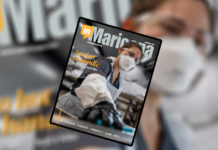
The Orinoco River serves as the frontier line between Colombia and Venezuela. The river and the piranhas stand in the way of the cattle trade between the two countries. Ranchers for hundreds of years have used sick cattle as a way to distract the piranhas. They take the sick specimen a mile up the river; a rancher crosses the river holding one end of the rope. Once on the other side, another cowboy makes a cut on the animal to induce bleeding, and the sick animal is dragged into the river. Piranhas that can detect a drop of blood miles away, rush to find the wounded animal, devouring it in minutes. While this gruesome event takes place, the other ranchers move several hundred animals across the river safely.
The Colombian drug mafia of the 80s and 90s used the same concept to smuggle millions of pounds of cocaine worth several billion dollars during this period. They used “mules” as decoys to distract U.S. authorities. They sacrificed a couple hundred pounds of drugs and a couple of people, knowing that the excitement created by the confiscated drugs would provide a window of opportunity to smuggle an even bigger shipment. The cost to the cartels was considerable, but, even with this “cost of doing business,” the cartels became extremely powerful.
Cities like Miami saw violence escalate to proportions unimaginable. At the same time that this was going on, President Reagan was signing into law the Immigration Bill of 1986. Millions of undocumented aliens were given the right to stay in the U.S., leading to full citizenship. Since there were no illegal aliens to blame for the problem, Florida, New York, several other states and the U.S. government confronted this flagella head on. The TV series Miami Vice portrayed the severity of the problem. It was high-speed chases of luxury automobiles and shootouts with drug dealers armed like small militias. The U.S. helped the Colombian government detain and deport hundreds of capos from the Medellin and Cali cartels, as well as the assassination of the infamous drug lord Pablo Escobar. This successful war on drugs created a vacuum on the supplier side at the same time that demand was growing in the U.S. This vacuum created an opportunity for Mexican drug cartels, and so they have been growing and becoming more powerful day-by-day.
The response from local authorities and even the federal government has been completely different this time around. The federal government has decided to build a wall to stop the flow of drugs, and local governments have concentrated on the immigration problem, trying to use immigration solutions to a drug trafficking problem. Last year Joe Arpaio and other sheriffs in Arizona arrested and deported about 38,000 people, and yet crime in the state continues on the rise. Arpaio is hunting and presenting maids, landscapers and factory workers as trophies of the war on drugs. He claims that about 17 percent of those arrested have a criminal record. If we send a group of rookie law enforcement officers to an impoverished section in any U.S. city, and we allow them to randomly detain 38,000 people, the percentage of people detained that have criminal records would be higher. Arpaio and others like Maricopa County’s Andrew Thomas and some sheriffs around the state of Arizona have wasted millions of dollars and valuable resources throwing a smoke screen in front of the public opinion to tell us how hard they are working to keep us safe.
Drawing a comparison between what is going on right now and what happened to Florida in the 80s and 90s, we see today slow speed chases of old trucks loaded with people armed with a gallon of water at best, as opposed to the high-speed chases of sports cars with drug dealers extremely well armed. The Mexican drug cartels don’t have to sacrifice any of their illegal merchandise anymore. All they have to do is sponsor a few unsuspecting laborers to come across the border and wait for the authority’s detection. Once all of the excitement that comes with the capture of a few laborers begins, drug capos take advantage of the situation to smuggle the precious illegal cargo.
Why do the Arizona authorities think that the drug cartels use “illegal looking” people in “illegal looking” vehicles to smuggle the drugs? With billions of dollars in revenue from the illicit trade, Mexican cartels can afford brand new vehicles and “Anglo looking” people to transport the cargo. Arpaio and others in law enforcement are providing the decoys themselves, creating excitement over the captures while taking the eye off the target. He has arrested, deported and alienated any possible informant. Arizona law 1070 has now effectively closed the doors on any possible cooperation from the community that can help fight these flagella.
Why would anyone come forward with any information if this act will cause his or her deportation? Let’s stop going after the wounded and concentrate on the real cargo crossing up the river. Yes, Mexican drug cartels love Joe, and, for as long as U.S. authorities concentrate on fighting a drug trafficking problem with immigration tools, we will see crime and the use and sale of illegal drugs go even higher. We will see gun shootouts, and the lives of unprepared law enforcement officers will be at risk.
Jake Romero
Submitted photo
InMaricopa.com runs, on a regular basis, opinion pieces submitted by community members. The following article is the opinion of the author, and does not necessarily reflect the views of InMaricopa.com. Have an opinion you’d like to share with Maricopa? Please email it and any applicable photos to [email protected] for consideration.











![Maricopa’s ‘TikTok Rizz Party,’ explained One of several flyers for a "TikTok rizz party" is taped to a door in the Maricopa Business Center along Honeycutt Road on April 23, 2024. [Monica D. Spencer]](https://www.inmaricopa.com/wp-content/uploads/2024/04/spencer-042324-tiktok-rizz-party-flyer-web-218x150.jpg)



